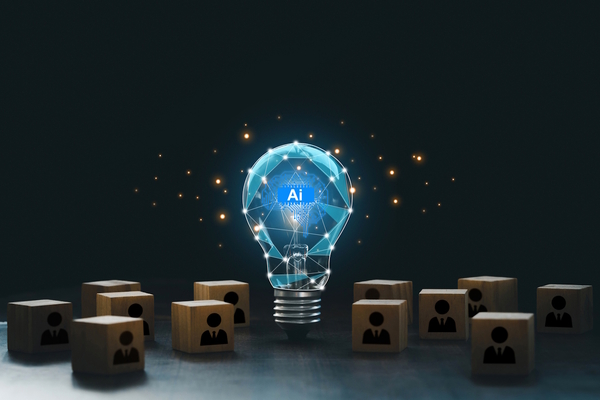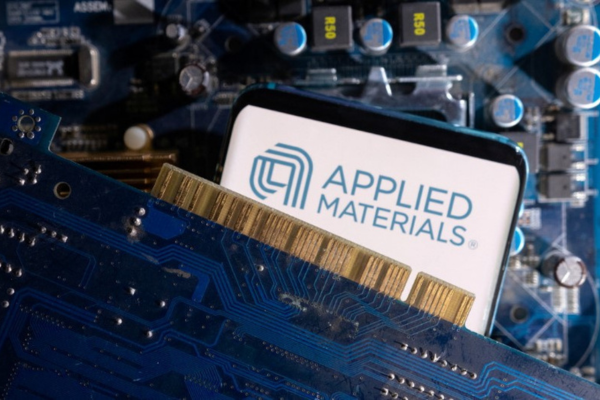Three ways AI will transform manufacturing

Grace Nam at Laserfiche explains how manufacturers can thrive in an unpredictable climate by leveraging artificial intelligence and machine learning
The manufacturing sector currently has the third-largest market share in AI (13%), with market value set to grow from almost £4.2 billion in 2024 to £123 billion in 2033. The rapid growth in investment isn’t surprising when you consider the obvious advantages new technologies have to offer; from streamlining entire production lines to accelerating decision-making processes and enhancing quality control.
However, although organisations now have a wealth of AI and ML tools available, many segments of the manufacturing industry are still heavily tied to traditional ways of handling data and documentation, with scattered technology and complex processes creating challenges for businesses in the sector.
As the industry makes improvements by adopting new technologies and integrating systems, it is time to evaluate what is working well and what has been overlooked. Rising costs associated with uncertainty over logistics, and vulnerabilities in the supply of essential raw materials are causing headaches for business leaders.
When paired with soiled information, it creates a recipe for disaster, including in document trails and delayed processes: Digital transformation is increasingly vital to survive and thrive in this competitive market.
Digitalised smart systems and processes, such as a cloud document and data management system can control and organise critical documents (storing files on multiple servers to be accessed through the internet). Leading DMS can also structure data, act as a single source of truth, and provide multi-layer protection against missing documentation to comply with regulations and help streamline processes.
Additionally, hybrid work models are here to stay. Therefore, process automation solutions that empower remote employees will be integral to the success of future workforces, and for businesses to attract and retain new generations of talent.
1. Freeing up time
AI will free up time for human employees - it won’t replace them. Countless hours are wasted by employees fulfilling administrative tasks that could easily be supported by digitalised systems.
Digital and automated solutions not only reduce the scope for human error, but they also reclaim significant amounts of time that can be redirected to supporting customers. In addition, manufacturing companies can implement processes driven by AI and ML to streamline areas of the business and integrate processes that often experience delays, as well as augmenting high-cost processes involved with compliance documentation to create better process cycles.
In a recent SME study that surveyed over 300 manufacturing professionals, one-third of respondents reported experiencing work delays a few times a week across various operational processes.
As AI enhances the capabilities of process automation, time consuming elements of the manufacturing process can be configured so that they are rule-based and decision-driven.
This means that employees will be able to replace the manual work in those processes with machine assistance. Allocating tasks that were traditionally managed by the skilled workforce to AI does not negate the need for human employees. Rather, it can act as a digital co-worker, freeing up the organisation’s human talent for tasks that require intuition, intervention and creativity.
With endless data available for analysis, plans to implement and integrate new technologies will evolve depending on how expansive and granular a given organisation decides to be. On a smaller scale, this might look like utilising AI to centralise customer information and order history. At the end of the scale, artificial intelligence can be used to gather product information that involves hundreds or even thousands of parts, where each part carries its own unique identification number.
Another example could be analysing the data in relation to how suppliers perform, enabling the manufacturing organisation to better understand what to expect and prepare for potential pitfalls in advance.
AI-powered technologies are also being implemented to resolve interoperability issues, enabling computer systems and software to exchange and make use of information across platforms. Allowing data to be shared between different software and technologies will help in streamlining processes.
By utilising process automation and enhancing data processing speed, we can expect organisations to see an increase in operational efficiency. These improved systems will reduce costs while improving scalability and flexibility, enabling the streamlined sharing of data across the business.
And it’s not just about keeping up with technological trends, it’s a necessity for manufacturers aiming to: make critical decisions promptly, effectively address high-cost functionalities, streamline operations, ensure accuracy of compliance documentation, enhance scope for innovation, boost ROI, and improve sustainability.
2. Reducing errors
Investment into AI will reduce margin for error. Although some of the benefits of AI appear to be similar to that offered by the integration of IOT, the real impact is incredibly different, with AI offering a much wider breadth of opportunities.
Where IOT focuses on supporting machines and network enablement, AI supports the functionalities that are traditionally confined to the realm of human responsibility and intelligence. While IOT’s focus is on the connection of physical objects via the internet, AI works to harmonise the entire process and structure unstructured data.
AI’s strength lies in its accuracy. It has the potential to transform employees’ lives by eliminating delays, reducing tedious manual tasks, and narrowing the scope for errors. Leveraging digital tools to move data seamlessly through business sectors not only enhances efficiency, but also contributes to the creation of a happier workplace that attracts and retains top talent.
This is particularly crucial in light of the fact that the manufacturing sector is expected to face a skills gap, as modern technologies are rolled out at an unprecedented pace.
3. Attracting new talent
New technology will attract new talent. Gaps in technological skills aren’t just harming productivity, in many cases they are restricting growth and stifling innovation.
With such rapid development, it is essential that the manufacturing industry attracts the necessary talent to keep up to date and train current employees who must adapt to this modernisation. If they don’t, they risk running into issues with delivering contracts: a widespread slowdown in the sector could negatively impact the wider UK economy.
AI and machine learning are offering the manufacturing industry the opportunity to unlock new levels of efficiency and create a solid foundation for future growth and innovation. From sales and supply chain management to quality checks and inventory control, AI is streamlining complex processes, predicting potential issues and ensuring timely delivery of projects.
Aligning with the desires of the younger workforce, the highly accurate information it provides is improving the working lives of almost everyone in the sector, helping them make better informed decisions at speed.
By bringing together human intuition with the speed and scale of AI technologies, manufacturers can remain competitive - and continue to grow and develop - for years to come.
Grace Nam is strategic solutions manager for manufacturing and healthcare at Laserfiche
Main image courtesy of iStockPhoto.com and vm

Business Reporter Team
Most Viewed
23-29 Hendon Lane, London, N3 1RT
23-29 Hendon Lane, London, N3 1RT
020 8349 4363
© 2024, Lyonsdown Limited. Business Reporter® is a registered trademark of Lyonsdown Ltd. VAT registration number: 830519543





